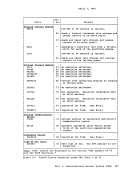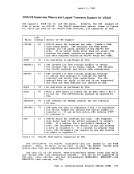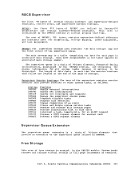with the virtual machine to be purged. A virtual machine should execute
the
are already queued are to be handled.
interrupts are purged. If a virtual machine has pending
interrupts from another source virtual machine, a
reflected to the source indicating that the virtual machine is no longer
available.
by another
it oriqinates with
cannot be canceled if any of the following conditions exist:
the
If the original request was
executed the
canceled. A virtual machine is notified of this condition with a
Figure 19).
from other virtual machines.
receive
machine is in
to accept messages at
full, tryaqain later). The
inform other virtual machines that a particular user is no longer in
executing the
machine can reset the
messaqes to other virtual machines.
machine only affects messages sent from other virtual machines.
154















































































































































































































































































































































































































































